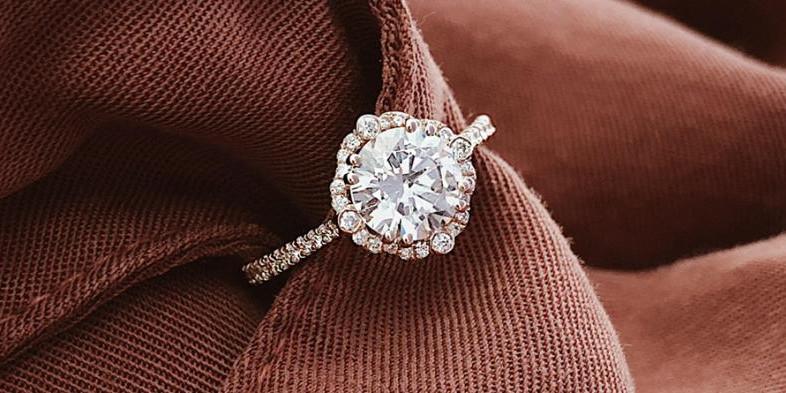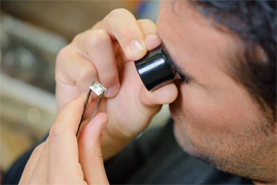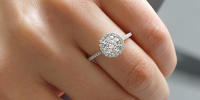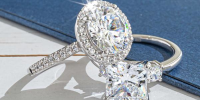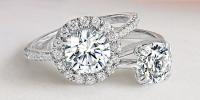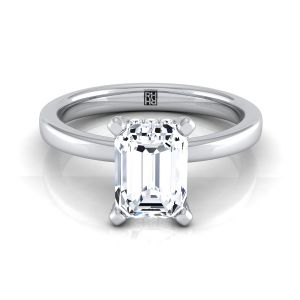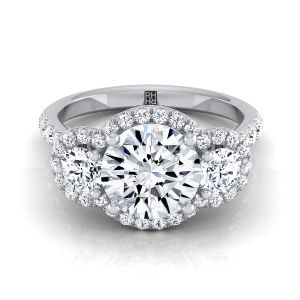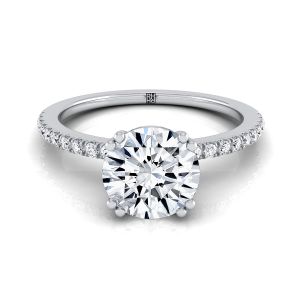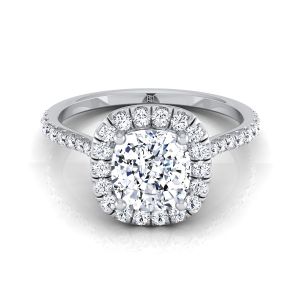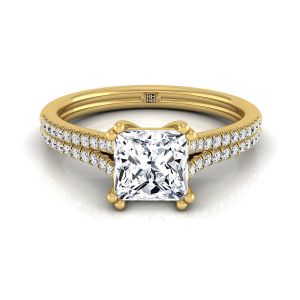You’re buying diamonds. So you’ve done your research and learned all about the 4Cs: color, cut, clarity, and carat weight. (If not, we’ll wait right here while you click those links and get your 4Cs on, OK?) But, honestly, knowing the 4Cs doesn’t really tell you what you should buy if you aren’t a Kardashian and a 5-carat D-Flawless isn’t really in the budget, am I right? Here are five diamond-buying hacks that will help you make the right choices to get the most for those hard-earned Benjamins.
Avoid The Magic Numbers
When you first start shopping for a diamond, you tend to think in round numbers. Hey, I want a one-carat ring, you think. Or maybe two carats? But diamond cutters know the way your mind works too. And they do all they can to hit those magic round numbers, even if it means cheating a little on the all-important-for-beauty angles and proportions of the cut.
Diamond prices are always calculated per carat. And the price per carat jumps at each magic number. So a 1.01-carat diamond will cost more per carat than a 0.98-carat diamond. A tiny weight difference becomes a significant price difference. And here’s the thing. Those two diamonds will look the same size to you. So, to hack the system, avoid the magic numbers and you’ll save money without sacrificing quality. Think outside of the box: you are going for a look, not a number on a spreadsheet. A cluster, for example, may give you the look you want with much less weight.
Color Me Pretty
Completely colorless diamonds are really rare. That’s why the less color a diamond has, the higher the grade and the price tag. Even the slightest hint of color can make a dramatic difference in value. Diamond grading is really precise with master sets and a controlled environment. The gradations are so fine that only unmounted diamonds can be graded so the setting doesn’t influence the color.
But you are planning to have a diamond that’s set in a ring, right? That means you don’t need a totally colorless diamond. Near colorless, G-H-I diamonds, are just fine: white enough not to show color in white gold or platinum but not white enough to demand serious coin. (That’s why these are the most popular colors for engagement rings.) We believe so much in this quality that every single diamond Coronet Diamonds sells is G-I color. They just look great in white gold.
If you are choosing diamonds to be set in yellow or rose gold, you can compromise more. Even J-K-L diamonds will look great when set.
Shape Is In The Eye Of The Beholder
Let’s say you have a family diamond that’s round but your girlfriend wants a fashionable cushion-cut. Do you have to disappoint her? Good news! Shape is in the eye of the beholder. You can choose a setting that makes a round diamond look like a cushion cut! Or another fancy shape.
This sleight of hand has another benefit: the 58-facet round brilliant is the most popular diamond cut for a reason. It performs the best: it sends back more light to your eye as brilliance than any other shape. (And all that brilliance also does a great job hiding small flaws too. Win-win.)
At RockHer, we even have creative designs that use lots of round brilliants combined that look like one larger fancy shape. So even without that family bling you can have your fancy shape and tons of brilliance too. Without spending more. Score!
Cut Is The Most Important C
If you care about how beautiful your diamonds are, not just how rare they are, cut is the most important C of all. And despite the fact that it makes the biggest difference in appearance, an excellent cut doesn’t cost much more than a mediocre one. Do we have your attention now?
You can get diamonds with high cut grades that will be beautiful. But some diamonds without cut grades are nice too (and they don’t command a premium.) To find these, you need to use the most sophisticated visual processing system on earth. Your eyes. If you look at lots of diamonds side by side, you’ll be able to see which ones are more beautiful, no certificate required.
Of course you can save the hassle by buying from a brand that only sells well-cut diamonds. Like ahem, RockHer. Your eyes will thank you.
Small Is Beautiful (And More Affordable Too)
Since bigger diamonds are more rare, the cost per carat increases with size. A nice one-carat diamond is about $7,000. But a two-carat diamond of the exact same quality might be $28,000! This price difference means that you can get a lot more bling for a ring if you think small.
For example, a one-carat round brilliant diamond is about 6.5mm in diameter. A half-carat diamond is 5.2mm in diameter. Two half-carat diamonds, each 5.2mm in diameter, have much more surface area than one larger diamond but don’t cost as much. This principle means when you buy jewelry with a lot of smaller diamonds, you can buy the same quality gems for much less. And you’ll actually get more sparkle.
The smaller diamonds combined weigh about one-third of what you’d expect from the size. And of course all those smaller gems are less per carat as well. You end up paying about one-tenth what you would pay for a single stone of that size. Now that right there is a genius diamond-buying hack. (You’re welcome.)










